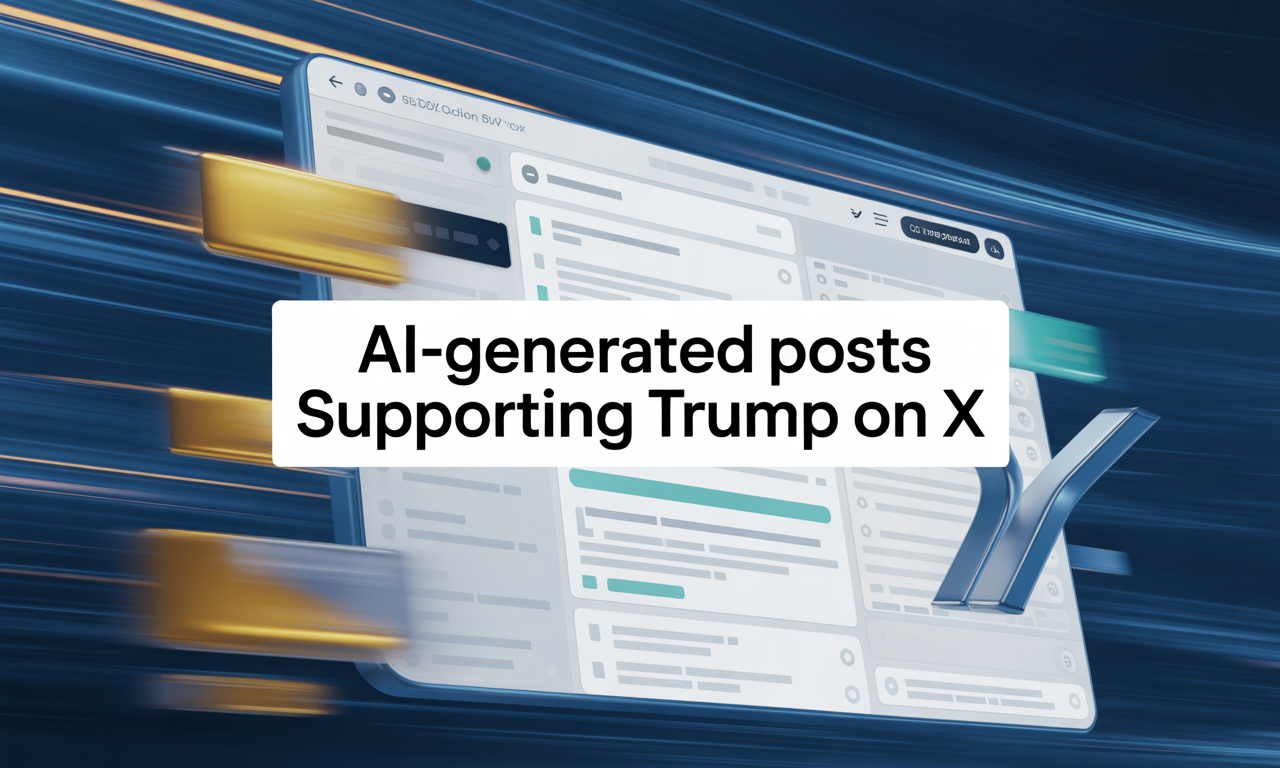AI-Generated Posts Supporting Trump Flood X, Spark Controversy
Advanced | August 17, 2025
✨ Read the article aloud on your own or repeat each paragraph after your tutor.
AI Overload on X: When AI-Generated Political Posts Flood the Feed
In recent months, the social media platform X (formerly Twitter) has seen a surge of AI-generated political posts on X aimed at supporting former President Trump. These posts include images, text, and memes—some realistic, some exaggerated—flooding users’ feeds with pro‑Trump content. Experts say these are part of a broader strategy to “game the algorithm”, creating visibility through sheer volume. One study on AI virality pointed out how cheaply and quickly AI-generated content can dominate platforms like X, increasing its reach even if it lacks depth (arXiv).
This trend exemplifies what critics call “AI slop”—low-quality, mass-produced content that prioritizes speed and attention over accuracy or nuance. It’s the digital equivalent of junk food: easy to consume, but not very nourishing for public discourse (Wikipedia).
Why AI-Generated Political Posts on X Matter
These AI-generated political posts on X are more than just noisy—they can shape political narratives and influence perceptions. A study analyzing AI in the 2024 U.S. election found that about 12% of images and 1.4% of texts shared on X were likely AI-generated. Even more striking: a small number of “superspreaders” were responsible for nearly 80% of this content. Many of these accounts leaned right politically and exhibited automated behaviors, amplifying content with minimal human oversight (arXiv).
Real or Fake? The Challenge of Detection
One of the biggest hurdles is spotting what’s real and what’s not. Fine‑tuned AI models can produce sophisticated, human-like content that’s hard to detect—even more so if researchers don’t have access to the underlying AI model. In practice, this makes distinguishing AI-generated posts difficult, especially when creators want them to blend in seamlessly (arXiv).
The Big Picture: Democracy at Stake
This flood of AI-generated political posts on X raises concerns about democratic processes. Rapid, mass-produced messaging can overwhelm social media users, potentially narrowing the information they’re exposed to or setting specific narratives. As one researcher noted, politicians are increasingly using AI and social media together in new, unexplored ways (Reuters).
What Can We Do?
Tech platforms and regulators are starting to respond. X and other platforms are examining how to flag, label, or limit generative content. Media literacy—teaching users how to spot AI posts and question sources—is also more important than ever. The goal? Moving from reaction to resilience in the face of AI-driven information campaigns.
Vocabulary
- Algorithm (noun) – A set of rules that a computer follows to make decisions.
Example: “The algorithm decides which posts appear on your feed.” - Superspreader (noun) – A user or account that amplifies content to a very large audience.
Example: “A few superspreaders shared the trending video thousands of times.” - Detection (noun) – The act of discovering or identifying something.
Example: “AI detection tools help identify fake images online.” - Fine-tune (verb) – To adjust a system for better performance.
Example: “They fine-tuned their model to generate believable text.” - Democracy (noun) – A system of government by the people.
Example: “Free and fair elections are vital for democracy.” - Narrative (noun) – The story or explanation put forward to shape understanding.
Example: “The ad helped shape the narrative around the campaign.” - Literacy (noun) – The ability to read, understand, and critically evaluate information.
Example: “Digital literacy is essential for evaluating online content.” - Flood (verb) – To fill or cover something in large amounts.
Example: “AI posts flooded the platform overnight.” - Misinformation (noun) – False or inaccurate information spread unknowingly.
Example: “The article contained misinformation that was later corrected.” - Platform (noun) – A social media or tech service where users share content.
Example: “X is a popular platform for political news and discussion.”
Discussion Questions (About the Article)
- What is “AI slop” and why does it matter in social media?
- How do “superspreaders” influence the spread of AI-generated content?
- Why is it difficult to detect content from fine-tuned AI models?
- What risks do AI-generated political posts on X pose to democracy?
- What strategies could help users and platforms respond to AI flooding?
Discussion Questions (About the Topic)
- Have you ever suspected a social media post was AI-generated? Why?
- How do you decide whether a post is credible or not?
- Should platforms label AI-generated content? Why or why not?
- How might AI affect politics in your country?
- What skills do you think students need to navigate AI-driven news?
Related Idiom
“Flood the zone” – To overwhelm with a large volume of information or content.
Example: “The campaign flooded the zone with videos and memes to dominate social media.”
📢 Want more tips like this? 👉 Sign up for the All About English Mastery Newsletter! Click here to join us!
Want to finally Master English but don’t have the time? Mastering English for Busy Professionals is the course for you! Check it out now!
Follow our YouTube Channel @All_About_English for more great insights and tips
This article was inspired by: Business Insider, Politico, and arXiv research.


